 Add My Company
Add My Company
Choosing a PIC Programmer
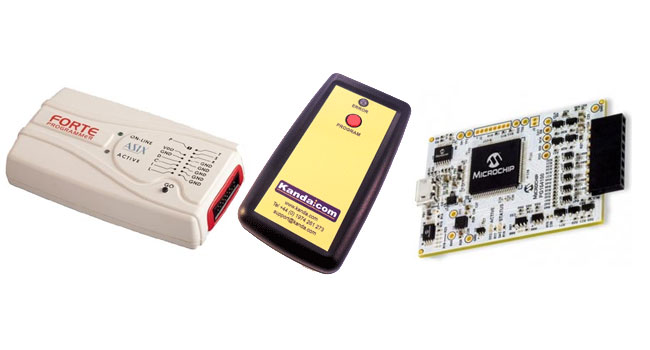
Choosing the right PIC programmer depends on your project’s requirements, budget and your experience level. There are a number of factors to consider when making your decision.
Reasons for Choosing a Particular Programmer
- Users: Are the users experienced or do they need the simplest solution possible?
- Compatibility: Make sure the programmer is compatible with the PIC microcontrollers you plan to use. Check the supported PIC families and specific model numbers.
- Interface: Choose a programmer with an interface that suits your workspace and workflow. USB is the most common option nowadays, but there are also RS-232, parallel, and Ethernet-based programmers available or choose a standalone programmer for use without PC.
- Programming speed: Programming speed can be important for production or projects that require frequent updates or large code segments. Faster programmers can save you time and improve efficiency.
- Features: Some programmers offer additional features like debugging capabilities, in-circuit programming (ICP), or serial numbers. Consider these features if they are important for your application.
- Price: PIC programmers range in price from affordable entry-level models to more expensive professional tools. Set a budget and choose a programmer that meets your needs without exceeding your financial limits.
- Robustness: Can the programmer cope with faulty boards in production, being dropped or otherwise manhandled?
- Reliability: Are you just programming the odd circuit or is it a disaster if your line stops because programmer has broken or you have just travelled 200 miles and the programmer fails?
Different PIC Programmer Types
For simplicity, PIC programmers can be divided in three types
- Microchip Programmers and Debuggers. Examples include PICKit 4 and PIC SNAP
- Professional ICSP Programmers, such as Asix FORTE
- Standalone Field and Production Programmers. Kanda standalone programmers include keyfobs, single units and 8 and 32-way versions
Microchip Programmers and Debuggers
These are widely available and function as both programmers and debuggers and are mostly used for development rather than production programming. If you just need to program a few PIC microcontrollers they are prefect but need to run from MPLAB X IPE, which is not the best production software.
Microchip started with PICKit and have now reached PICKit 5, with each version being more expensive. PIC Kit 4 is a good compomise and is still available..
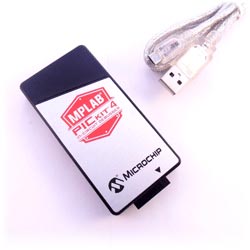
PICKit 4 Programmer and Debugger
PIC SNAP is an unboxed version of PICKit. It is less robust but a lot cheaper. It has same functionality as a PICKit 3.
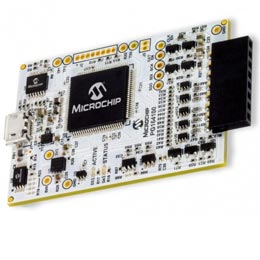
PIC SNAP Programmer and Debugger
Professional ICSP Programmers
If you need more reliability, a more robust product and features like serial numbering, buffer and configuration editing, then production programmers are the answer.
These are tougher, more reliable and allow multiple programmers from 1 PC, production modes and DLL to write your own interface. One of the best is Asix Forte programmer. This is very fast.
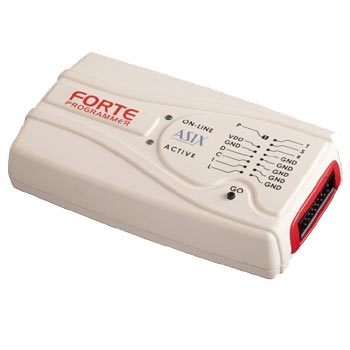
Forte PIC Production Programmer
Standalone Field and Production Programmers
Kanda produce a range of standalone PIC Programmers to suit every budget. They are tough, robust and reliable. Above all they are really easy to use, with just a single button press.
If you want to simplify your production or field updates or send programmers to distributors or third party manufacturers, then standalone programmers are the best solution.
Kanda Standalone PIC Programmer
The Kanda Standalone PIC programmer is the most popular. It is battery powered, can power target while being simple to use. Load it from the PC then it is ready to go.
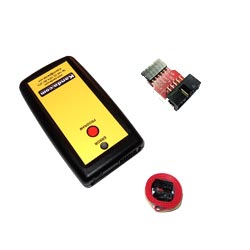
Kanda Standalone PIC Programmer
Kanda Keyfob PIC Programmer
Also loaded from PC and completely portable with 1 button press. Keyfob is powered from target and has less protection from faulty targets but is low cost and is available in bulk packs for real savings.
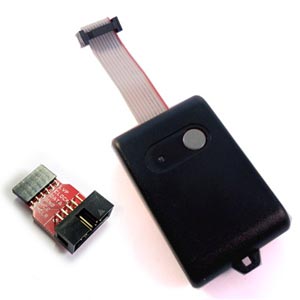
PIC Standalone Keyfob Programmers
Standalone 8-way Programmer
This version can store up to 8 different images, with different PIC microcontroller targets and files. The slot is selected with a rotary switch then a single button press programs target. Ideal for field updates.
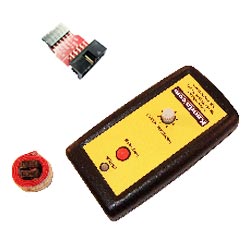
Summary
If you need complete flexibilty and debug capability, then Microchip PICKit or SNAP are the solution. If reliability and production features are more important, then FORTE PIC programmer is the best solution.
If you need easy of use for unskilled operatives or distributors, then Kanda PIC standalone programmers are the answer.
For more information on Choosing a PIC Programmer talk to Kanda
